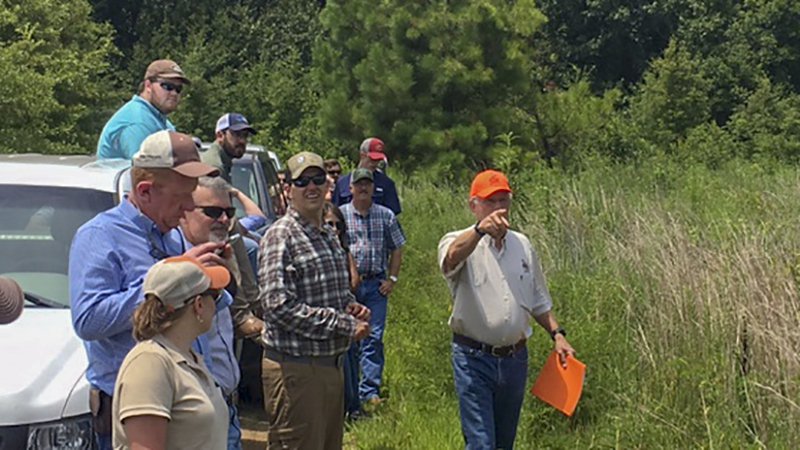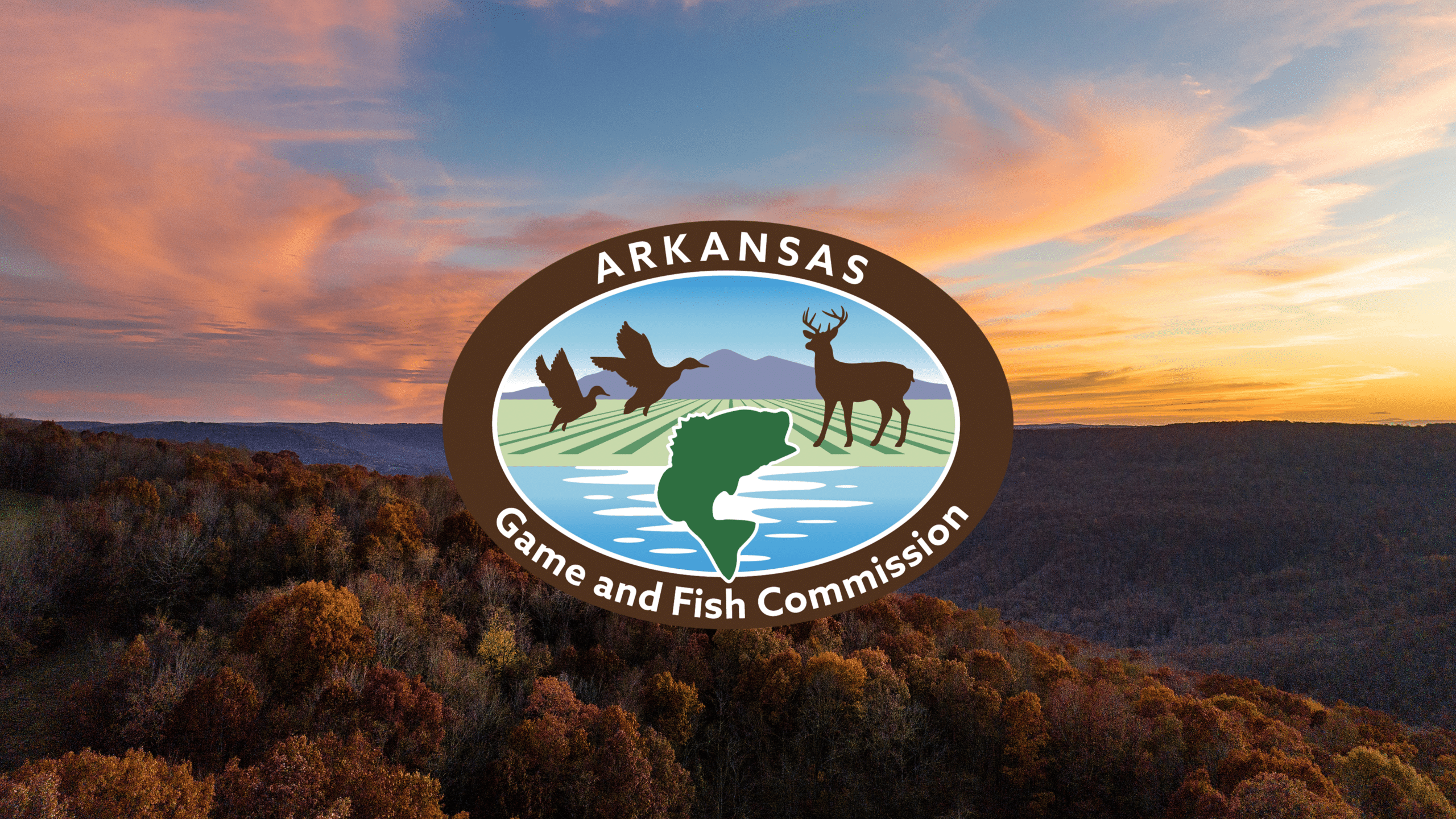Memphian restores acreage for quail, draws notice from Commission
BY Jim Harris
ON 04-17-2019

April 17, 2019
Jim Harris
Managing Editor Arkansas Wildlife Magazine
EARLE – Walker Morris, who farms 250 total acres near Earle in Crittenden County, describes himself as a “recovering quail hunter.”
“I’m just not getting through the first step,” of recovery, he says with a laugh. His addiction to hunting quail began when he was 11 years old, in 1954. When he concluded a 33-year career as a pilot for Northwest Airlines out of Memphis International Airport, he looked for land as an investment. He and a longtime friend, Percy Magness, who already had a large holding near Earle, settled on new acreage nearby on the Arkansas side of the Mississippi River. About 13 years ago, they sought to enroll some of the acreage in the federal Conservation Reserve Program, which provides landowners rental payments in exchange for the owners taking that land out of farming and making the landscape more conducive to wildlife. Morris’ partner died, but his partner’s son, Lon Magness, is now in the investment with Morris, who says he does all the “hands-on” stuff on the land, which includes prescribed fire and disking.
“We looked at enrolling in CRP but we had to wait a year,” Morris recalled. “So, in the spring of 2007, we enrolled as much as we could of our 250 acres in CRP. We had some cropland in the center and the CRP acres around it.”
Morris’ land work to help restore the northern bobwhite earned him a Landowner Award, presented before the Arkansas Game and Fish Commission in its recent March monthly meeting. Morris was one of four landowners and families honored.
David Graves, an AGFC private lands biologist, has worked with Morris for the past six years, and he nominated Morris for the award. The AGFC presented the first of its Landowner Awards to honor a landowner in each of Arkansas’s four congressional districts for their work in habitat restoration. All four honorees are involved in quail restoration.
CRP recently celebrated its 30th year and recognized 30 success stories around the United States in the program.
“Walker is one of the landowners who won that recognition,” Graves said. “We put him in for that he was able to get that award.” Graves added, “Walker is outstanding. He’s one of the best landowners I’ve ever worked with.”
Morris resides in the East Memphis area and says he’s about 35 miles, or a 50-minute drive, to his Arkansas quail project.
He says he first began “chasing these little birds” as a youngster in the northwest corner of Alabama, on a farm at the edge of a small town. A great-great-great grandfather had settled on that land in the 1830s. Morris’ grandfather enjoyed the prime hunting era of quail there, he said, hunting until he was 84. “When I came along, it wasn’t as great as my grandfather had seen it.”
The same issues that Arkansas has endured for the past 40-plus years in terms of quail habitat loss were witnessed on that Alabama spread and throughout the South, with changes in farming and land use. More efficient farms took away the many fence rows and the brushy habitat, plus the food, that the bobwhite required to survive.
The land he and his friend bought in Arkansas in the 1990s was previously all row-crop farmland. The transformation to wildlife-friendly landscape, Graves noted, was achieved by three CRP practices: CP22, Riparian Forest Buffers, 65 acres; CP33, Wildlife Habitat for Upland Birds, 45 acres; and CP42, Pollinators, 16 acres. Morris says the pollinator area appears to be as beneficial to the quail as it is to pollinators.
Morris also plays an active role in the management of his CRP habitat with a very extensive prescribed burn rotation, Graves said. Besides being actively involved with the CRP rented acreages listed above, Morris is involved with many other wildlife-friendly activities around his property, including prescribed burning, strip-disking, herbicide spraying, brushy cover planting, Egyptian wheat food plots and predator trapping. He has also paid for and planted additional plots of native warm-season grasses out of his own pocket to supplement the habitat established through CRP.
“He does not only have a great piece of property, but he is also very enthusiastic about recruiting more landowners into the various conservation programs,” Graves said.
Morris has actively worked with surrounding landowners to help make their properties more wildlife friendly. This year, Morris co-hosted a workshop with the AGFC Quail Program on his property.
Morris says there have been ups and downs during the past 12 years, and he’s learned plenty along the way. “We have quite a bit of big bluestem, but if I had to do it over again, I would not grow as much of that. We have so much rain, and then when we have a good windstorm with the rain, it lays down. The little bluestem doesn’t seem to be affected by that type of weather as much. I only include little bluestem in the seeding now … The forbs, we’re always trying to encourage that growth.”
Morris says he will burn half of the habitat area, if he can, every year. “That leaves cover for the birds to feed while the other half is growing, he said. He notes that a very important part of the habitat work was scattering brushy spots like wild plum, sumac or false indigo at about every 50-100 yards, “giving that vertical cover mixed in.”
He says he was happy to be recognized by the Commission, and his personal investment of money, time and sheer labor in the field has been worth it, he said. “It’s a labor of love. I get as much gratification as anything I do. I feel we’re losing or have lost so much habitat for wildlife. I look back on my childhood, and we had so much habitat that was an accidental byproduct of farming in the ’50s. As farming changed, we’ve lost all that.”
These days, Morris says he enjoys working his dogs with the birds rather than hunting quail.
“I hope to be able to continue it as long as I can,” he says of the land restoration, the burning and disking. “I’m 76 years old now and I hope to be able to keep the pace up. Or I’ll hire someone to do it if I can’t… Anything I can do to help the quail, I’m glad to do it.”
Recent News

AGFC Commissioner Meeting Notice
Apr. 16, 2024
Subscribe to Our Weekly Newsletter E-mails
Don’t miss another issue. Sign up now to receive the AGFC Wildlife Weekly Newsletter in your mailbox every Wednesday afternoon (Waterfowl Reports are published weekly during waterfowl season and periodically outside the season). Fishing Reports arrive on Thursdays. Fill in the following fields and hit submit. Thanks, and welcome!

